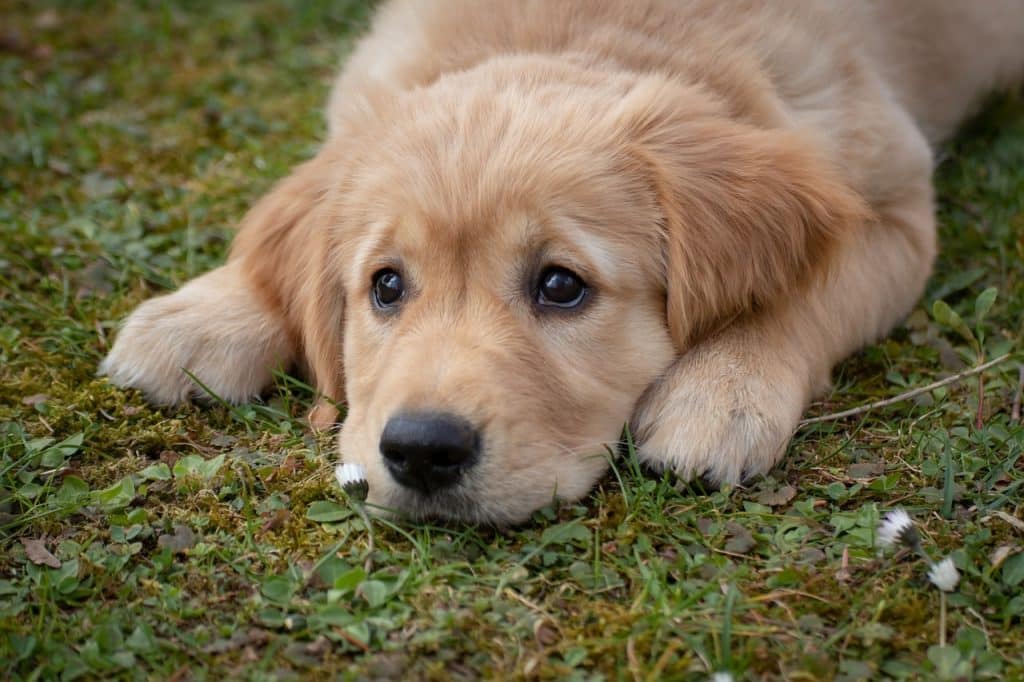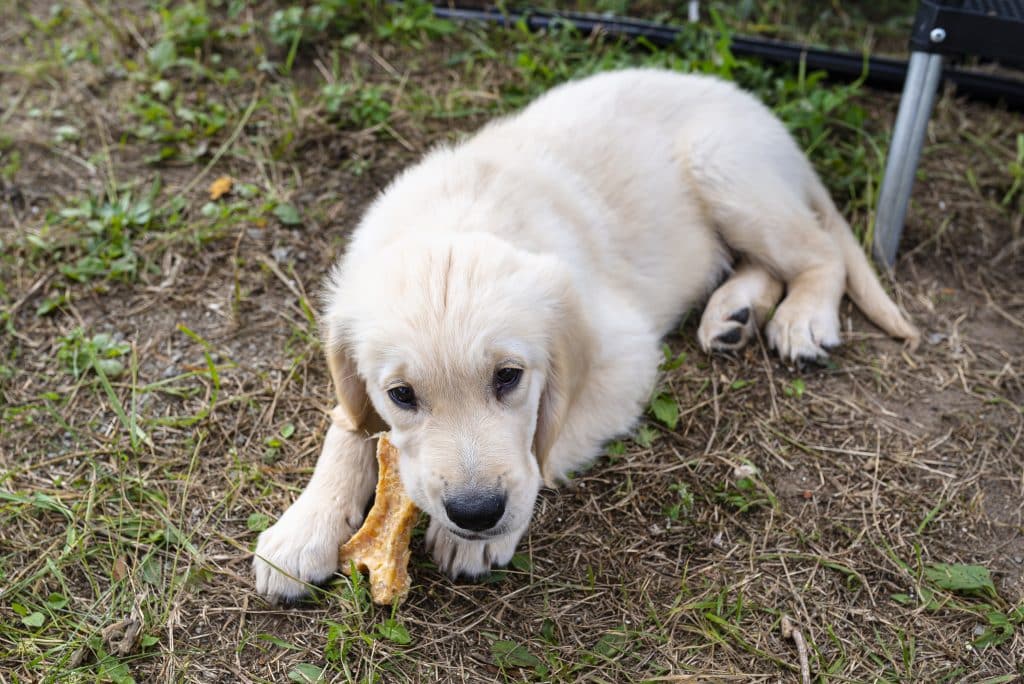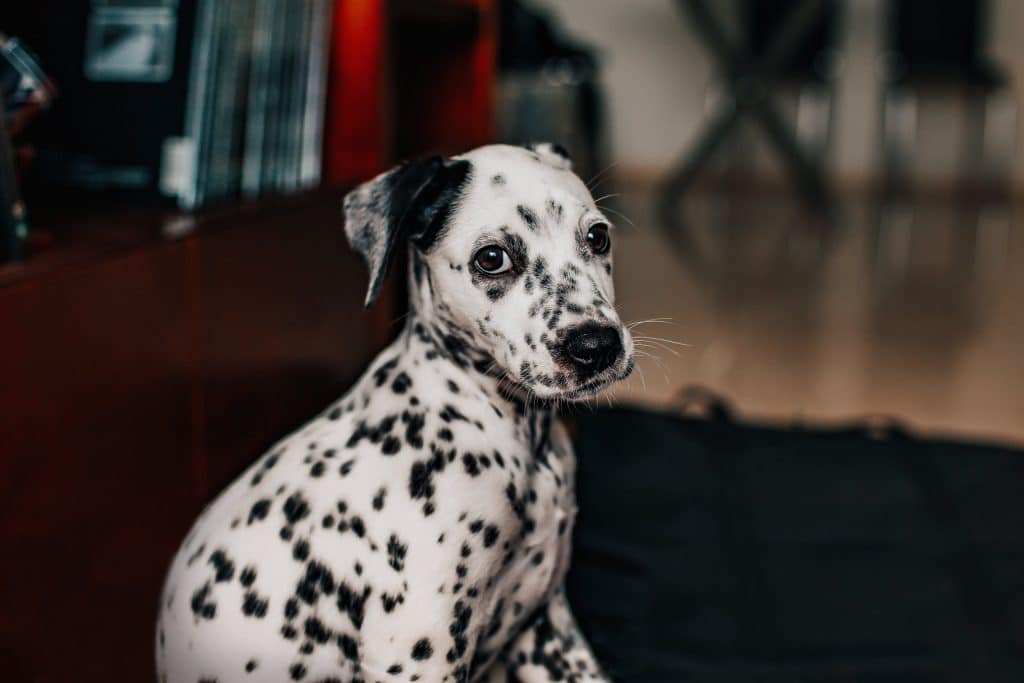
How To Train A Puppy
Puppies are adorable little balls of fluff that tug at your heartstrings. But if you’re not careful, they’ll also be tugging at other things (like your shoelaces or fingers).
Getting a puppy is an exciting time for anyone, but training them is essential for their growth into a well-adjusted adult dog.
If you’re wondering how to train a puppy, or whether training them will take the fun out of the experience, read on for the top tips that may just help your dog become your best friend.
Understand Your Puppy’s Behavior
Understanding why your puppy does what s/he does is essential to the success of training them. Puppies, by nature, are curious and instinctual. This also leads them to being mischievous at times. In these initial months of exploration, they will use their ears, eyes, nose, and (much like a baby) their mouths to decipher the world. They thrive on positive reinforcement and encouraging them when they do well is the key to success.
When To Start Training A Puppy
Training a puppy from the beginning is vital. That’s not to say that an old dog can’t learn new tricks. (They can!) But since puppies are learning every minute, Teaching them early gives them the best chance of success.
If you ask trainers, vets, or other dog owners, “when is the best time to train a puppy?” they’ll tell you to start the moment you get them. Since dogs are pack animals, it’s important to establish who the alpha is immediately.
Consistency Is Key
When it comes to training a puppy, consistency is key. That doesn’t mean that only one person should consistently train the puppy. It means that everyone (including visitors) should adhere to your training rules.
For example, if you’re attempting to train a puppy not to jump on guests, you have to follow through with everyone. Sure, puppies are cute, but you don’t want your 1-year-old Great Dane to still be jumping on people.
Make sure that visitors are given the instructions as well so that they know how to act if your puppy jumps on them.
Positive Reinforcement
Puppies thrive off of encouragement, reinforcement, and consistency.
When training a puppy, make sure that you’re rewarding them when they do well, but not scolding them for just being a puppy. Just like with human babies, redirection and praise often works better than scolding and shaming.

Use Treats
Treats go hand in hand with positive reinforcement. It teaches puppies that when they do the desired behavior, they are rewarded. They are either ignored or not given treats when they do the undesired behavior.
Finding the best puppy training treats can be a challenging task. Just like humans, puppies have preferences (and they usually aren’t the healthiest). Look for treats that are wholesome and nutritious and try to stick with the ones that are labeled for puppy use.
Treats can become expensive, so remember, your puppy doesn’t know if you cut a small treat in half, they just know it tastes good.
Puppy treats can also be high in calories, so make sure that you’re spacing out the treats and sprinkling in the positive reinforcement as a reward as well. Remember, attention is just as much of a treat as a snack.
Puppy Training Classes
If you search the internet, you’ll see a multitude of obedience training options. Most puppy classes will work towards basic commands but are not always the best environment for puppies who do not have their full vaccine series yet.
Look around for reviews and see what options are out there for training puppies. Remember, very full classes tend to be a distraction, so you may want to go for something more individualized.
There are also “sleepaway” training camps for puppies where they are trained by professionals for weeks at a time. Owners fear their puppies will bond to the trainers but it actually has the opposite effect.
Once a puppy knows that humans are the boss, it only strengthens the bond between them and their owners. A good dog trainer will involve the owner in the process during those weeks so they can learn the proper commands as well.

Basic Commands
If you’re looking to do some standard training for your puppy, there are some basic commands that every trainer keeps in their back pocket. A lot of commands build off of each other, so make sure they master one before the other.
And remember, puppies don’t have a long attention span, so keep training sessions short.
- Sit: Using a treat, guide their nose upward. As they lower their bottom, voice “sit” and reward.
- Stay: From a sitting position, gesture an open palm, say “stay,” take a step back, and reward their patience.
- Down: From a sitting position, move a treat down to the floor. Once they lie down, reward.
- Heel: Train them to walk beside you using treats as a guiding tool. This will also help with leash training down the road.
- Leave it/Drop it: This command teaches impulse control. Offer a higher value treat or toy as an exchange for what they shouldn’t have. Don’t create a chasing game either. The puppy thinks it’s fun and will run from you. Be stern.
Potty Training Early
One of the most important things to teach a puppy is to go potty outside. They are going to have accidents, but the more frequently you take them out, the better off you (and they) will be.
Puppies have to go every 2 hours or right after waking, eating, or drinking. It may seem like a lot, but remember their little bladders can only hold so much. Always bring your treats along when they go outside so that you can reward them immediately for the desired behavior.
If they have an accident inside, do not shame or rub their nose in it. All that teaches is fear. Once that positive reinforcement sets in, they’ll get the idea that outside is the place to go.
Socialization
Socialization is so important for puppies, because it puts them in situations that are out of the normal everyday routine.
Take them to farmer’s markets, your kid’s soccer practice (if allowed), or a pet store. This introduces them to new sights, sounds, and smells. You want them to have those experiences now so that they are not skittish in the future.
Make sure you are leash training your puppy so that they remain safe in these crowded places.
Keep them close to you until they have their full series of vaccinations so they don’t get ill.
Crate Training Early
Crate training is not the same as just locking your dog up.
Your dog’s ancestors lived in caves and modern dogs view their crates as such. A crate provides a safe haven for them to have some quiet moments and also keeps them safe in case you need to get some stuff done around the house and won’t have eyes on them for a while.
Do not use the crate as a punishment because they will learn to be frightened of it. They should be taught to associate their crate with comfort, warmth, and safety.
Get On Board With Puppy Training
Training your puppy is not nearly as difficult as it seems, but it does require knowledge and consistency on your part. Training your puppy doesn’t have to take the fun out of dog ownership. In fact, it will solidify your pack order and teach your puppy to be respectful of your rules.
Be consistent and loving and your best friend will always be by your side. For any puppy training tips or questions regarding your puppy’s health, don’t hesitate to reach out. We are always happy to help you schedule your appointment.
Services
Or call us at (407) 862-6892

